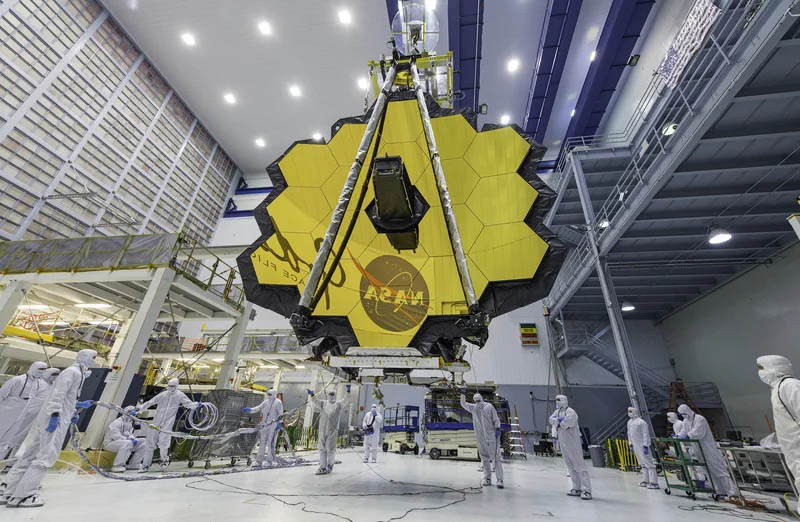 VIEW LARGER In this April 13, 2017 photo provided by NASA, technicians lift the mirror of the James Webb Space Telescope using a crane at the Goddard Space Flight Center in Greenbelt, Md. The telescope is designed to peer back so far that scientists will get a glimpse of the dawn of the universe about 13.7 billion years ago and zoom in on closer cosmic objects with sharper focus.
VIEW LARGER In this April 13, 2017 photo provided by NASA, technicians lift the mirror of the James Webb Space Telescope using a crane at the Goddard Space Flight Center in Greenbelt, Md. The telescope is designed to peer back so far that scientists will get a glimpse of the dawn of the universe about 13.7 billion years ago and zoom in on closer cosmic objects with sharper focus. NASA's Webb telescope has discovered an exoplanet, which is any planet that is outside of our solar system, for the first time, the agency announced Wednesday.
The planet, called LHS 475 b, is nearly the same size as Earth, having 99% of our planet's diameter, scientists said. However, it is several hundred degrees hotter than Earth and completes its orbit around its star in two days. LHS 475 b is in the constellation Octans and is 41 light-years away, which is relatively nearby.
Scientists are still trying to determine if the planet has an atmosphere. It's possible LHS 475 b has no atmosphere or one made completely out of carbon dioxide, but one option can be totally eliminated.
"There are some terrestrial-type atmospheres that we can rule out," said Jacob Lustig-Yaeger, a researcher at the Johns Hopkins University Applied Physics Laboratory in Marylan. "It can't have a thick methane-dominated atmosphere, similar to that of Saturn's moon Titan."
Researchers were scanning the skies using NASA's Transiting Exoplanet Survey Satellite (TESS) when they came across the exoplanet, and used the Webb's spectrograph technology to further investigate. Spectrographs transmit light from an object to a spectrum, which can give information about the object's temperature, mass and chemical composition.
"These first observational results from an Earth-size, rocky planet open the door to many future possibilities for studying rocky planet atmospheres with Webb," said Mark Clampin, astrophysics division director at NASA headquarters in D.C. "Webb is bringing us closer and closer to a new understanding of Earth-like worlds outside our solar system, and the mission is only just getting started."
 NPR NEWS
NPR NEWS
By submitting your comments, you hereby give AZPM the right to post your comments and potentially use them in any other form of media operated by this institution.